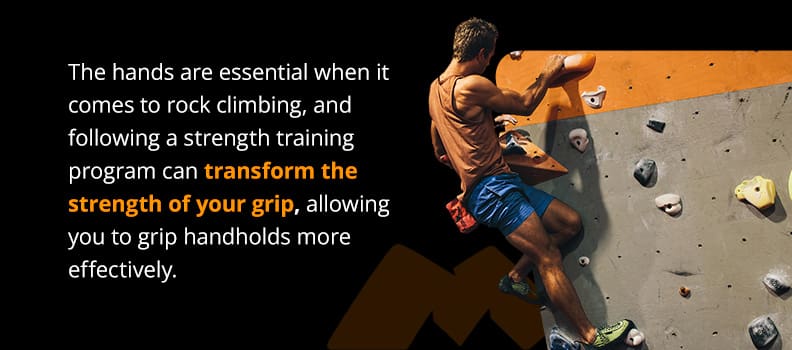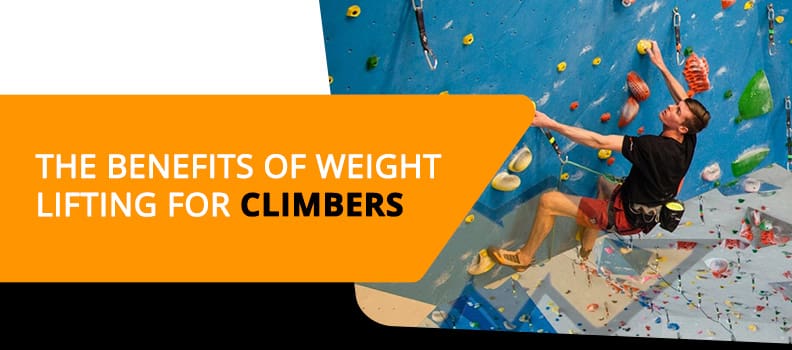Rock climbing is an intense, full-body workout requiring high skill, strength and endurance levels. As a climber, you may question whether you need to spend extra time building and toning your muscles, especially since your sport already helps you build strength.
The short answer is — yes! Even the strongest rock climbers can have difficulty moving past some obstacles, and strength training builds on your skills. As you increase overall strength, you’ll notice a difference in muscle groups, such as the arms and back, which makes you a better climber overall.
The Role of Muscles in Climbing
While rock climbing is a full-body sport, you will use specific muscle groups more than others. Some muscles you should know to aid in understanding a climber’s body and physique include:
Lats
When you pull yourself up the wall, you engage your latissimus dorsi (lats) and other back muscles. As you move vertically and laterally up the wall, you engage your lats and back muscles, leading to greater development over time.
Biceps
Your biceps are in your upper arms and help you bring your hands closer to your body. You also stimulate this muscle group when you pull your body toward your hands. Having strong biceps can assist you in scaling a wall more efficiently.
Forearms
Your forearms are one of the fastest muscle groups to develop as you rock climb since they play a large role in gripping the wall. When you grab the wall, your muscles, from your fingers to the elbows, become engaged to maintain a firm grip.
Core
Your core naturally engages as you climb to keep your body upright. For example, as you scale the wall, you use your core to keep your pelvis and chest aligned as you pull yourself up. A strong core is especially important for scaling steeper parts of a wall as it helps your body stay in proper alignment.
Calves
You engage your claves when you stand on your toes to reach the next hold. Your claves can also assist in maintaining your foot position when your foot is above your body. Strong calves are essential, as a weak calf may prevent you from keeping your heel raised as you pull yourself up to the ledge your foot is on, increasing your risk of falling.
Benefits of Weight Training for Climbers
Strength training develops muscles and improves your physique. As a rock climber, this doesn’t mean increasing muscle mass but refining your strength to increase your efficiency and reduce your chances of injury. Some of the many additional benefits of weight training include:
Endurance
Rock climbing requires a high level of endurance, especially in areas such as your core and back. Making these muscles stronger means you can climb longer without fatigue. Strength training will also train your body to use energy more efficiently, especially when it comes to repeated climbing movements.
Stronger Grip
The hands are essential when it comes to rock climbing, and following a strength training program can transform the strength of your grip, allowing you to grip handholds more effectively. Creating a stronger grip can also improve your performance overall, so you can climb faster and higher.

Mobility
Strength training is more than lifting weights. An effective strength training plan can increase mobility, especially in the lower body, for more accurate foot placement. You can also use strength training to increase ankle mobility so you can be more flexible while climbing.
How to Strength Train for Climbing
As with any exercise, it’s best to start your strength training for climbing on a smaller scale and then build up as you increase your strength. Some exercises you can try to start building your strength include:
Grip Training
When it comes to rock climbing, your grip is the deciding factor between successfully scaling a wall and falling. However, a firm grip requires as much endurance as strength.
While strengthening your grip helps you grasp harder holds, endurance can help you keep a steady grip longer, which is critical for rock climbing. Timed holds are a great starting point for building grip strength and endurance. By using a pull-up bar, dumbbell or grip tool, you can train your hands to withstand the stress of climbing for long periods.
Upper Body
Climbing is a great upper-body workout that requires a lot from your upper back, lats, biceps and forearms. Similarly to grip training, increasing the strength in your upper body should focus more on building endurance than maxing out your muscles.
Some exercises climbers can do to increase their upper body strength include pull-ups and curls with resistance bands. These exercises engage the pulling muscles that help you move up the rock wall.
Instead of going a few reps with a heavy weight, aim for lighter weights and more reps to build endurance.
Lower Body
Rock climbing may seem upper-body focused, but your lower body propels you upward to reach the next handhold. Exercising the lower body through movements like the snatch and clean can stimulate the movements needed for climbing. Strength training can also increase your balance and overall stability.
When you strength train your lower body, be careful not to choose a weight that is too high. The main purpose of strength training is to build functional strength instead of muscle mass. Strength training can also assist in ankle flexibility and toning your entire leg, which are both crucial for a successful climb.
Focusing on your lower body will improve the coordination of the joints and limbs, increase your strength and make you a better climber overall.
Core
As with any exercise, having a strong core is vital for stability. Since rock climbing places constant tension on your core, ensuring it is strong will go a long way in improving your climbs.
Again, your focus should be increasing your endurance and holding poses for as long as possible. This means performing moves such as Russian twists and planks.
As you perform these exercises, try performing more reps or holding these poses for an extended time to increase your stamina. As you strengthen your core, you’ll likely notice a difference in your skill level since a strong core can aid in greater control.
Stay Strong With a Fitness Class at Momentum Climbing

If you’re ready to reach new heights, both figuratively and literally, we invite you to join one of our fitness classes at any of our locations in Utah, Texas and Washington. Each class targets general strength and conditioning and will help you confidently tackle your next climb. Contact us today to learn more about our classes, or join our growing community of climbers.


